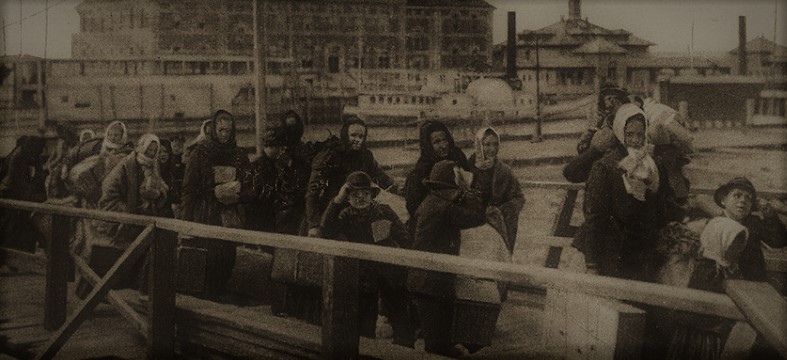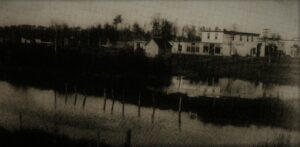Guðrún Ásbjörg Guðmundsdóttir was born in Grindavík on December 12, 1886, the daughter of Guðmundur Einarsson and Herdís Aradóttir. Guðrún came west to Canada in 1913, while her husband, Guðbergur Magnússon, had come west the year before. They had gotten married in October 1911 and their first child was born in 1912. They settled in the Víðir Settlement, but that settlement was densely populated, almost every parcel of land was spoken for. But they persevered there for seven years, but then Guðbergur gave up on the dream, the family moved back to Iceland. The return was not financially viable because Guðbergur died at the beginning of the year 1922, and soon Guðrún saw that a widow with three children did not get by easily in those years in Iceland, and she made the decision to return to the west. On October 30, 1922, Guðrún sailed with her three children, Hólmfríður, Vilborg and Guðmund, and they arrived in New York in November. Guðrún’s previous journey west had certainly gone without a hitch, she went to Quebec in Canada and from there took a train west to Winnipeg. Although the westward flow to America has been stable for years, Icelanders’ westward journeys were much fewer after 1914 and almost always went through Canada. It is therefore not surprising that the border guards had problems with Guðrún. Although she lived in Manitoba for seven years, that stay did little to improve her English skills, primarily because she then lived in an Icelandic settlement where Icelandic was spoken in every town.
Ellis Island – A thousand-year-old dead language!

Landing on Ellis Island in the early 20th century.
The New York Times published an article on November 16, 1922 about the various hardships faced by frontiersmen at Ellis Island in New York. An example was taken of a mother of three children who obviously did not belong to any group of other immigrants because no one who heard her spoke her language and there were so-called interpreters from the Nordic countries among them. No doubt they were all born in the United States because their language skills did not help Guðrún at all, not even when she pulled out a check for 500 US dollars because not a single letter helped to identify her origin. When the passports were finally checked, the guards found out that she was from Iceland, but that didn’t help her much when she tried to explain the purpose of her trip to America. Finally, there came a man of Danish descent, a student, who listened to Guðrún and then caught his breath; this was the language of the Norse people who settled in Iceland a thousand years ago, a language that no one spoke anymore, only found in hundreds-of-years-old writings. With this news, Guðrún moved on and with the help of good people at a nearby bank, she got the check cashed and continued west to Manitoba.
Settlement in Manitoba

Arborg 1916. Íslendingafljót (Icelandic River) in the forefront. Photo: A Century Unfolds
Guðrún had friends and family in the Víðir Settlement, and there she crossed the border and settled down. The new settler woman had no choice but to start farming, a few cows, a few pigs and a few chickens were the livestock and with this she could feed and clothe herself and her family. Almost all the women in the settlement knitted socks and mittens, and Guðrún was no exception, selling her products to fishermen. She actively participated in social issues and contributed to society, e.g., she was a member of the Ardal women’s association (Ardalkvenfélag), a member of the Esja Icelandic club in Arborg and volunteered at the department’s library. She also worked as a midwife in the countryside, most of the time under the care of the district doctor, but occasionally she worked alone when a doctor was not available. The years passed in harmony, the children grew up, had their own families and soon grandchildren, to Guðrún’s great joy. It came to pass that Guðrún wanted a change, she had her house moved to Arborg and rented it out but moved herself to Winnipeg where she lived until 1956, then she moved back to Arborg. She ran a guest house in her home and thus increased her income. It was in 1971 that she decided to move to the Betel residential home in Gimli. There she made many friends and met old acquaintances. This story is based on a good article by Kris Gudmundson that was published in the local history “A Century Unfolds” He ends the article with a funny story about Guðrún in Gimli: “I remember one visit to Guðrún in Betel, I found her at the game table like so many times before where she played with three of her friends. She invited me to her room, and I asked her who had won? She replied: “Sometimes you have to let them win, they are getting old.” Guðrún was over ninety” JÞ
English version by Thor group.
